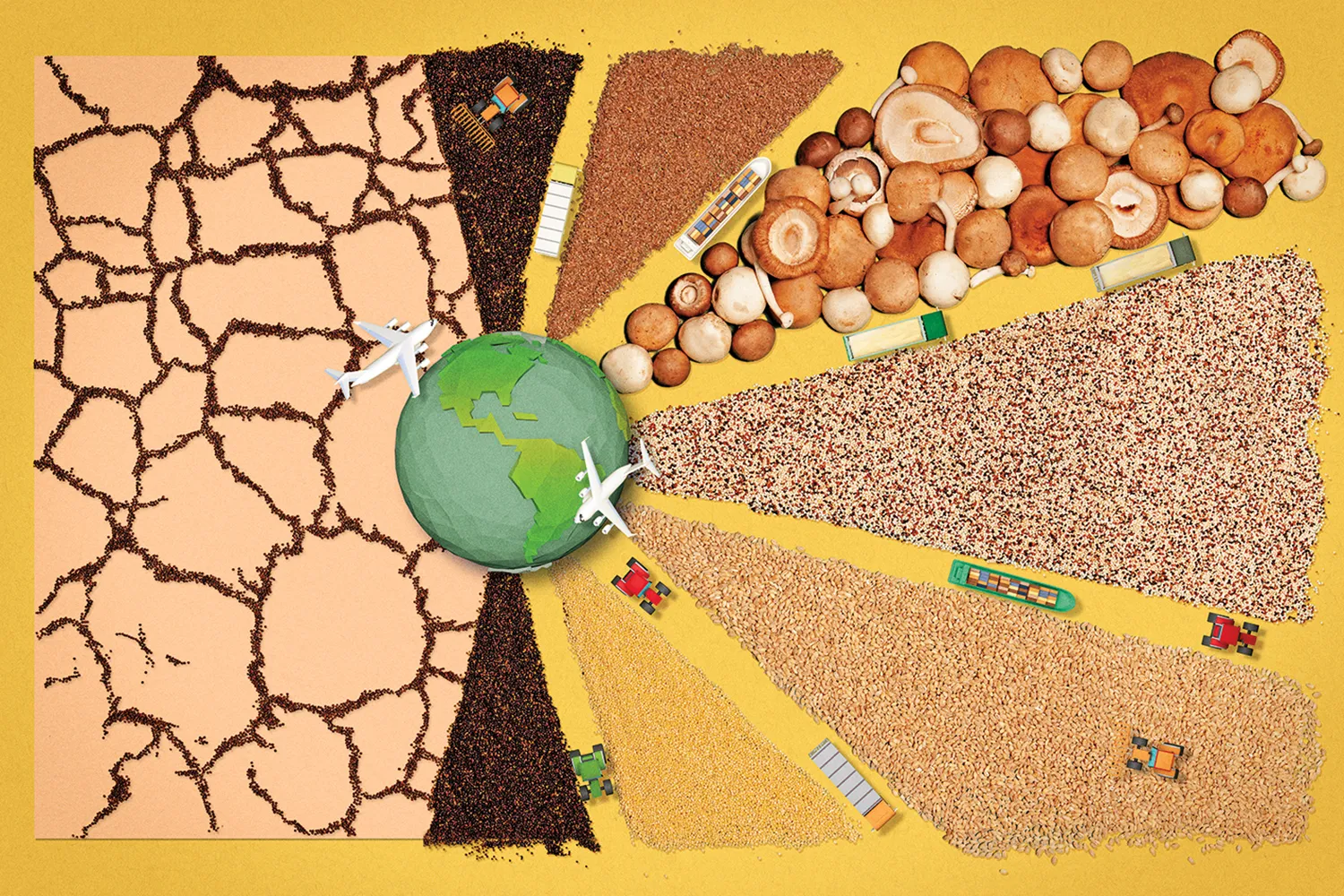The worldwide system that gets food to your table is like a big, connected puzzle. It’s usually pretty strong, but sometimes it has problems. Lately, we’ve seen a bunch of issues that show it can have problems. From pandemics to extreme weather events and geopolitical tensions, food supply chain issues have become increasingly common and concerning.

The COVID-19 pandemic
The COVID-19 pandemic had an immediate and profound impact on the food supply chain. Lockdowns, labour shortages, and transportation difficulties disrupted the normal flow of goods from farm to fork. Panic buying also strained the system, resulting in temporary shortages of essential food items. This crisis underscored the need for supply chain resilience.
In 2022 and 2023, there were food crises in various regions, as evidenced by the escalating food prices. In 2022, the world witnessed substantial food price inflation and significant food shortages in several areas. Sub-Saharan Africa, Iran, Sri Lanka, Sudan, and Iraq were particularly hard hit. Prices of wheat, maize, oilseeds, bread, pasta, flour, cooking oil, sugar, eggs, chickpeas, and meat all saw increases. The causes of these issues were disruptions in the supply chains due to the COVID-19 pandemic, a global energy crisis spanning from 2021 to 2023, the Russian invasion of Ukraine, and some impacts of climate change on agriculture. Notably, severe floods and heatwaves in 2021 destroyed crucial crops in the Americas and Europe. Spain and Portugal also experienced droughts in early 2022, resulting in the loss of 60-80% of crops in certain areas.
The Russian invasion of Ukraine
The Russian invasion of Ukraine has had a significant impact on the global food supply chain. Geopolitical tensions resulting from this conflict have disrupted trade and supply routes, leading to shortages and price increases for certain food products. Ukraine is known as the “breadbasket of Europe,” and its agricultural contributions are vital to the global food system. The conflict has jeopardized Ukraine’s ability to export grains and other agricultural commodities, affecting global food prices and creating uncertainties about future supplies. The situation underscores the importance of diversifying sources and enhancing resilience in the face of geopolitical tensions that can ripple through the food supply chain, affecting both producers and consumers worldwide.
Climate Change and Extreme Weather
Multiple heat, flooding, and drought events between 2020 and 2022 significantly hurt global food supplies and reserves. These weather events, which have been connected with climate change, made the food system less resilient to shocks like the war in Ukraine. Global reserves of wheat were extremely low at the beginning of 2022 because of these weather events. During the year 2022, many similar events connected to climate change continue to severely reduce agriculture production in the world. These events can devastate crops, disrupt logistics, and lead to shortages. Additionally, changing climate patterns can alter the geography of farming, causing long-term challenges for agriculture in certain regions.
Food supply problems are tough challenges. Everyone, like governments, businesses, and people, needs to work together to fix them. We should use what we’ve learned from recent issues to make our food supply chain stronger, greener, and safer. If we solve problems at the source and put practical ideas into action, we can make sure there’s always enough food for everyone. The food supply chain must change and grow to feed more people and handle any future issues.
